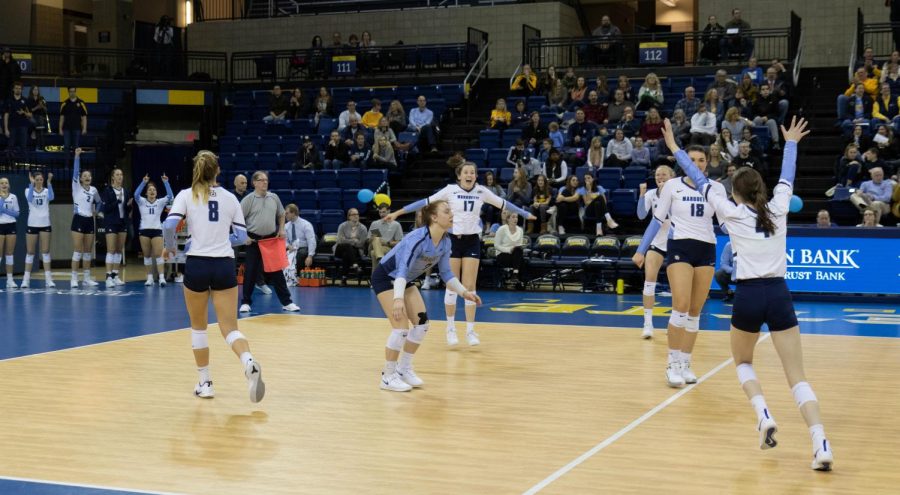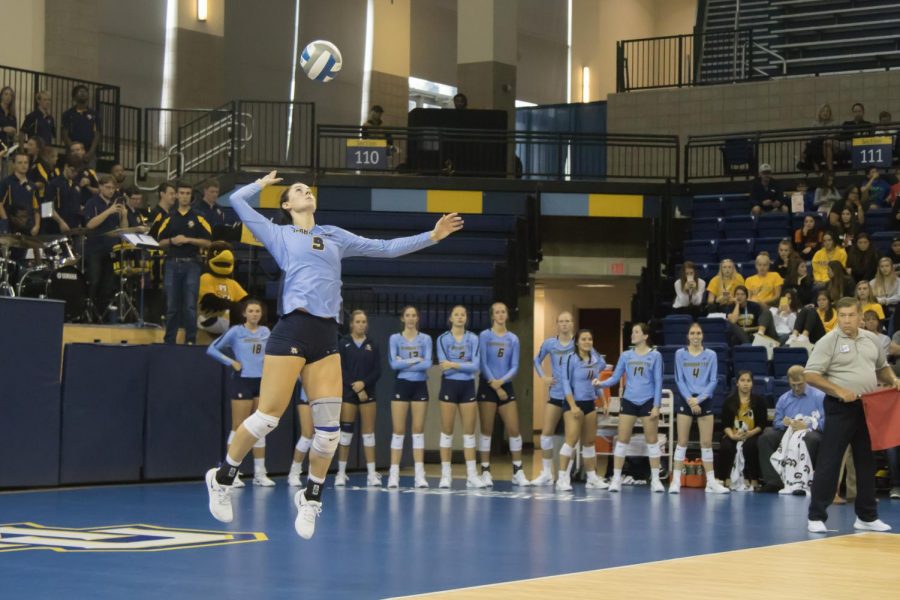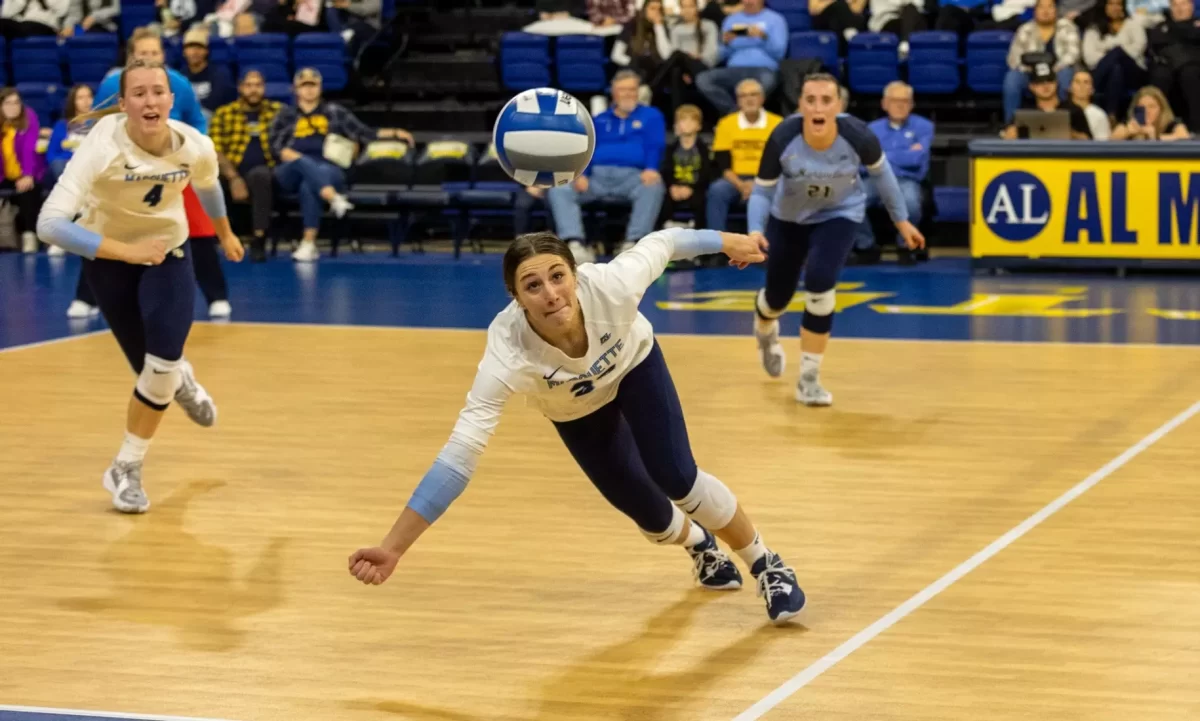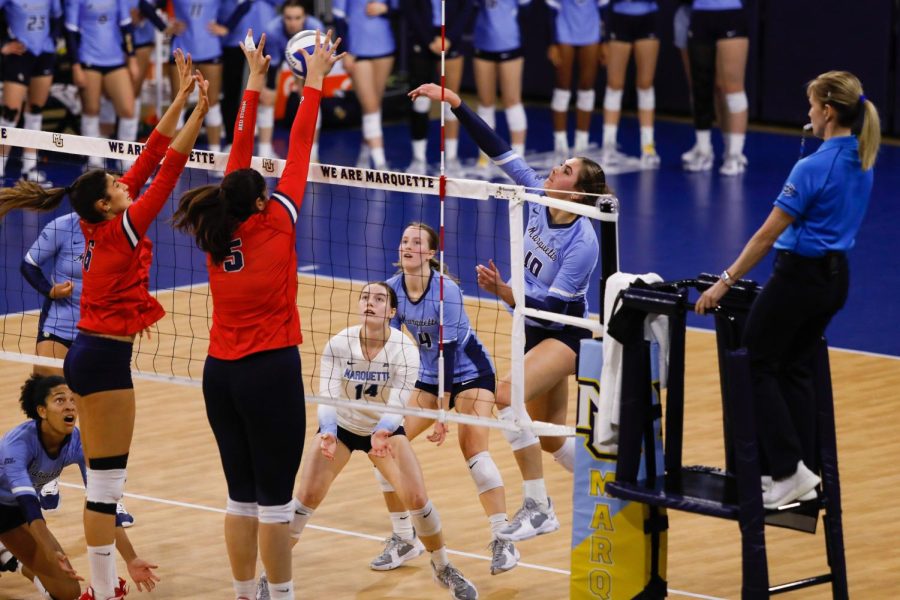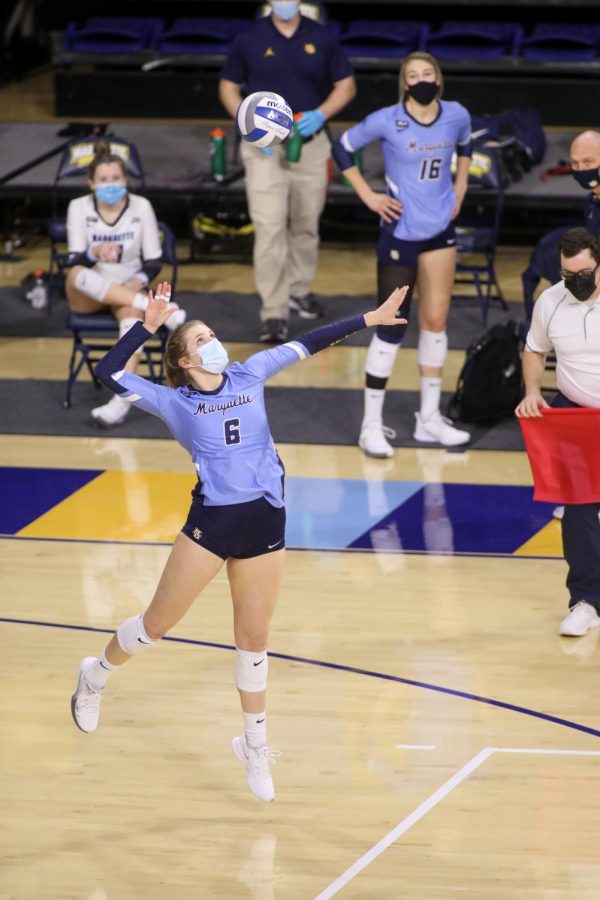In 1984, the United States men’s volleyball team beat Brazil for the U.S.’s first-ever gold medal in the event. A key to the U.S.’s victory was their use of the jump spin serve, which was relatively new to volleyball. Following that match, the jump spin serve would change how volleyball was played.
The jump spin serve is used to put pressure on the opposing passers because after the ball is served, there is more speed and spin on the ball. That makes it nearly impossible for opposing passers to read it. Thus, during the gold medal game, the United States servers were able to force the Brazil passers into making errors.
“The spin makes it predictable, whereas people are standing or floating (the serve), they are called floaters because the ball floats, so the less spin, the better because spin makes balls predictable,” head coach Ryan Theis said. “So if a ball has back spin, for example, it is the easiest ball to pass. A jump serve has top spin, which is also pretty predictable and easy, but if you can cut it, if you can slice it a little bit to give it a tail and there is pace, it’s more stressful for the passers.”
Since being introduced to the world in the 1984 gold medal game the men’s game routinely uses the jump spin serve, but it is rare to see in the women’s game. Part of the reason for this is that a jump spin serve requires a lot of velocity on the ball that men are able to generate, and if the serve is done incorrectly, it is extremely easy for passers to react to. However, Marquette freshman Madeline Mosher has become an exception to that trend.
Mosher had worked on the serve in high school and club, but never felt comfortable enough to use it regularly until college. Following the preseason, Mosher began spending more time during practice working on her jump serve. Part of the reason she waited until after the preseason to begin working on jump serves was that practicing a jump serve is physically demanding, and after preseason ended she no longer had taxing twice-a-day practices.
“The toss has to be good before you get a good hit, so it is a lot of jumping and hitting it as hard as you can,” Mosher said.
After Marquette lost to Creighton in September, Theis decided he wanted to make a change in the lineup that would keep Mosher on the floor in serving situations. He thought she would be more effective from the end line using a jump serve opposed to a float serve.
“When your hand contact is really good, meaning you can control a ball with spin, jump serving is not hard for those people,” Theis said. “There aren’t a ton of people who have great hand contact. (Mosher) is one that does.”
“I think it’s just that a lot of teams don’t have someone who does it, so other teams aren’t used to passing it,” Mosher said.
Mosher’s jump spin serve is still a work in progress. This season, Mosher has a serving percentage of .822. She still will use her floater in situations when she has lacked success with her jump spin serve, but Mosher’s jump serve has been clocked at 50 miles per hour at times this year. When the serve is working, she has the ability to win four points in a row with the serve.
“The toss is the biggest part for me. If you don’t get a good toss, it is not easy to get a good hit on it. I would say that is the biggest thing for me is whether or not I can toss it consistently in a game,” Mosher said.
“It can be an effective point-scoring tool for us,” Theis said. “She can scratch 50, which is the highest we have seen and that can be pretty effective.”




